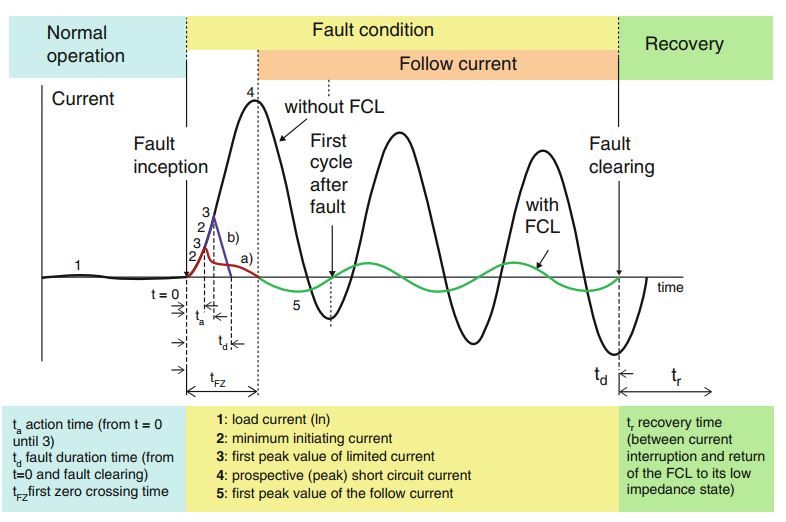
Fault current limiters (FCLs) are special power system devices used to mitigate and lower high short-circuit currents to much more manageable levels for existing protection equipment like circuit breakers (CBs). FCLs are generally installed with the goal to lower the available fault current to a level the CB is capable of interrupting safely prior to the CB beginning its opening operation. The FCL limits the fault current to a preset level based on the particular system configuration and system conditions. The FCL allows the engineer to apply the chosen technology to avoid a full system upgrade of protection equipment like circuit breakers, which can be rather costly.
A FCL operation with both current limitation and current interruption is shown in Fig.
The basic physical effect of FCL applications is the increase of impedance in series with the line. Therefore, grid impacts and interactions have to be considered when applying FCLs.
The objective is to keep rated current levels and short-circuit levels within the standard ratings of commercially available equipment, especially circuit breakers.
These ratings typically provide enough margin with respect to short-circuit power at any given voltage level.



